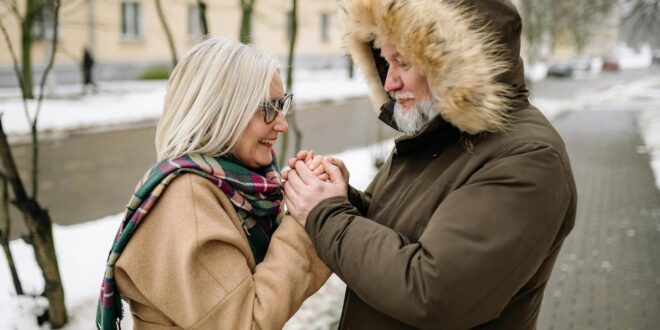If you think you feel the cold more keenly than when you were younger, you may not be imagining it. As we age, we often grow more sensitive to the cold. Sometimes this is because of natural changes to our bodies, and sometimes it’s because of health issues.
Generally speaking, it’s not unusual for seniors to experience a decline in Basal Metabolic Rate (BMR) i.e. the way in which our body burns the calories we feed it. Burning calories enables a multiplicity of bodily functions, including the internal generation of heat, so when BMR declines, it can leave us feeling cold.
As well as this, although many seniors find it a challenge to maintain a healthy body weight, after the age of 70, fat deposits beneath the skin in some areas of the body typically begin to decline. Post 70, fat may continue to gather around areas such as upper legs, waist, and stomach regions, but it usually reduces from beneath skin on the face, feet, and hands. It’s in these areas seniors often feel the cold most keenly, especially as reduced blood flow to hands and feet is common in seniors. One of the ways to mitigate reduced blood flow to these areas is to stay sufficiently hydrated.
Health issues can also contribute to seniors feeling the cold, and among these is diabetes. The disease can contribute to circulation problems, and if not attended to can cause nerve damage to various parts of the body, but especially to the feet, where cold is likely to be felt by most seniors regardless of health status.
Another cold-contributor is hypothyroidism – a condition more prevalent in seniors. Those who suffer from it have a thyroid gland which produces insufficient supplies of the thyroid hormone. This health issue can lead to a slowing down of the body’s metabolism (its use of calories), which is why people who have hypothyroidism often feel the cold more than others.
As well as health conditions resulting in seniors feeling colder, the medications used to treat them (including beta-blockers) can contribute to feeling colder.
Beating the cold
Keeping warm in winter is an essential art, whether or not you suffer from a health condition, and much of it comes down to the clothes we choose, and the way in which we dress. Wool is a natural choice for warmth, and many of us choose to knit our own garments from woollen yarn. However, if the weight of hand-knitted garments on shoulders and arms is an issue (and it can be for many seniors), light-weight merino tops are the answer. Furthermore, they can be worn in layers so insulating warm air is trapped between them (tucking upper garments into lower clothing further helps to trap in this warmth). If the expense of purchasing wool is an issue, fleece can be a useful alternative, and is conveniently light weight.
While many of us consider it appropriate to wear warm jumpers in winter, we often shy away from wearing a warm hat indoors in the colder months. However, adults lose approximately 10% of their heat through their heads (more if hair loss is an issue). If you are having trouble keeping warm during the day, or in bed, pop on a woollen hat and feel the difference. Similarly, feet are an area that need attention in cold weather. Not only do they encompass a significantly large surface area, but they also have little in the way of muscle (tissue which produces heat). Keep them warm with woollen socks and insulating slip-proof slippers. Light-weight scarves and fingerless gloves can also provide warmth, and there are no rules that say they cannot be worn indoors!
If you are feeling the cold more than usual this winter, dress to compensate, but also be prepared to consult your GP in case an underlying health issue is the cause.








Ann - 2 years ago
Bed socks!